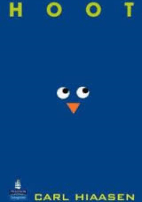Hello Mixed-Up Filers!
Hope everyone has been well since my last post, which was actually less than two months ago. I’m not sure just how long I can keep going at this dizzying pace they have me on now, but I do appreciate the confidence they’re showing by putting me up so often. So, with that being said, it’s time to once again dive into my spot.
As always, I had to think about what to write about, but this time I didn’t have to think too long. In the past, I’ve written about fresh starts, but this year, at least for me, really did feel like one. You see, I know I’ve mentioned this before, but I’m a teacher, and for the most part I’ve taught high school, but this year, with much trepidation, I started teaching middle school. Admittedly, I wasn’t sure what to expect, though I do have to say that the one thing I was looking forward to, was the chance to cover Middle Grade books now. Not that I didn’t like the books I did with my High School students, but my heart and my sensibilities have always leaned toward Middle Grade, so this definitely does feel like a brand new start. And I’m using that opportunity to go back and read books which I enjoyed and started with Hoot by Carl Hiaasen. I always found Hoot a fun book. It is about a middle-school boy’s efforts to stop a pancake house from being built over land which houses nests of burrowing owls. The book is funny and raises issues for kids to be aware about. And for the most part, this is what I enjoy about Middle-Grade books. They do make you think, but I think they are a lot of fun to read and for me at least, to write as well.
And that’s the thing that got me the most, even more than the book, and by the way, it is a good book. But, the thing that did get me, is how much I enjoy Middle-Grade. How much I enjoy being around kids who read it. Seeing it through their eyes. I think being around that, will help me more as a writer. I know the advice given is to always read what you write, and I’ve done that, but when the majority of your day is spent discussing the darker aspects of most YA novels, it has a tendency to seep into your mind and thus your writing. Not that there aren’t some dark MG books out there, but usually there is a differentiation of subject matter between the two.
This year, I do have a sense of newness and rediscovering myself. I’m hoping, as many other writers do, that this is my year. I’ve gotten very close a few times, but couldn’t quite get over the hump. This year I hope it will be different. And to that end, I’m actually having fun with my current story. That isn’t to say that I didn’t enjoy writing before, since that wouldn’t be true, but writing has the last few years become something of a refuge for me. Whenever things have gotten rough in my life, it’s writing that helps me escape. Right now, it also has a renewed sense of fun for some reason and I think a lot of it does stem from teaching that age range now. I love introducing some of these Middle Grade books that I love to my students. Seeing their reactions. And quite honestly, that’s now fueling me. They ask me about my writing and actually get interested about what it is that I write. I love my when my own kids get the same way. Asking me about my stories. My kids also are finally at the age of which I write for and I know that also has helped me have some fun with it. I now get to talk with my kids about my stories and that’s a lot of fun.
So, inside I have to believe that this is my year. Hope and belief go hand-in-hand for me. And once again, I also hope that that all others who have been close and haven’t yet managed to get over the top, that it happens for you. Leave a comment and let me know about your writing and how it’s been going. I might actually make my students leave comments, since I think I had zero last time, so I’m hoping to at least double that.
And that is why I teach Language Arts and not math.
Good luck everyone!





